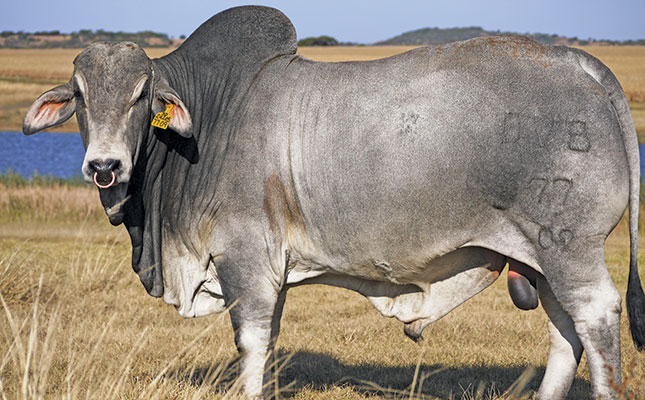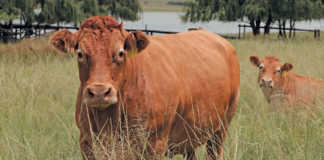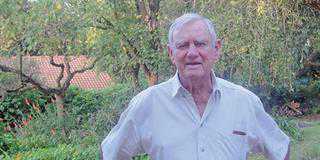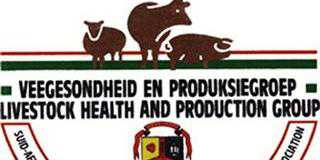
Photo: Ting Braithwaite
For those still in the early days of being a commercial beef producer, it is often financially impossible to afford higher-priced bulls and breeding females that hold the promise of optimal productivity and carcass quality.
However, this should not be a deterrent, as many lower-priced breeding animals that can contribute to the development of a commercial enterprise are regularly on sale. This is according to Ting Braithwaite of Damview Brahmans, who produces both stud and commercial Brahman cattle in KwaZulu-Natal.
He concedes that it takes time and practice to learn how to visually evaluate a potential breeding animal’s physical strengths and flaws with accuracy.
“The most important overall consideration is to ensure that the animal is sufficiently structurally sound to enable it to add value to your beef enterprise,” he explains.
“A lower-priced animal can still have many beneficial characteristics that will help to develop the commercial herd in the direction that you want it to go in terms of your production environment and goals.”
Braithwaite, together with fellow veteran beef producers Tim Hempson of Southern Berg Brahmans and Ndumiso Gule of Baynesfield Estate, strongly agrees that no matter how cash-strapped a potential buyer is, he or she should never resort to buying a breeding animal that a seller originally intended to send for slaughter.
These animals are usually so flawed that they would most likely cost money by being unproductive and uneconomical, and also potentially pass these flaws on to their progeny.
Hempson says that potential breeding stock for a commercial beef herd must be able to generate a positive return for the enterprise, even if this return is marginal in the early years. An animal that is sufficiently structurally sound to walk, graze and produce a calf every year, and which has beefiness to impart to its progeny, is a solid foundation on which to grow and improve the herd.
“There’s no such thing as a perfect beef animal. But, as commercial beef farmers, we should always strive towards producing what we believe will be the perfect animals for our particular production environment, breeding goals and target market.
“Sticking to the fundamentals when selecting nucleus or replacement breeding stock will always help improve the herd.”
From head to tail
Braithwaite, Hempson and Gule confirm that the more experienced a stockperson becomes, the more positive and negative physical attributes he or she will be able to identify visually.
This can be complemented by non-visual information, such as estimated breeding values (EBVs) and other data, that is gathered using scientific testing.
“Visual evaluation is a good start,” says Braithwaite. “Remember that a fat and healthy-looking animal that’s on sale will not necessarily make a good production animal. The animal should have physical characteristics that the potential buyer is looking for to help improve his or her herd.”
Female animals should not appear masculine, and bulls should not appear feminine, as this would indicate an imbalance in their hormones that is likely to affect their fertility negatively.
Bulls and breeding females should also have width between their forelegs, and capacity and muscling across the chest.
Hempson explains that capacity incorporates good depth, length and thickness of body.
“Legs and feet are extremely important aspects to evaluate,” he stresses.
“This is because an animal that can’t walk properly will be unable to move and graze, and in the case of natural covering, females will struggle to stand under a bull, while bulls will struggle to follow and mount females.”
The two claws comprising each hoof should ideally be similar in shape and size, and have smooth and even lines. The claws should stand flat on the ground and show no signs of rolled claw, as this can lead to painful lameness. Correcting this with a hoof trimmer is a temporary measure and the rolled claw will eventually grow back.
Adequate heel depth in hooves is also a desirable trait.
“A beef animal should have a torso with capacity, muscling and spring of rib, which allows space for added muscling. Progeny that inherit these traits will weigh more at weaning, and these extra kilograms will increase the income per animal achieved at weaner sales,” says Hempson.
A beef animal’s topline and hindquarters comprise the most expensive cuts for consumers.
A commercial producer, who aims to achieve maximum per kilogram on-the-hoof prices for his or her slaughter animals, should aim to acquire breeding stock that show a broad and beefy rump.
Bulls
According to Braithwaite, a buyer of a breeding bull should be aware that a two-year-old bull is likely to look noticeably different once it reaches the age of three years.
This is because a two-year-old is still developing physically, and its testosterone production has not yet peaked. A three-year-old bull is close to full physical and hormonal development and will therefore appear beefier and more masculine than its younger self.
“While a two-year-old can be used as a breeding bull, it will require more care during this time to prevent anything from happening that might stop it from reaching maturity and its full potential,” he explains.
“In addition, a two-year-old might not yet have manifested any visually obvious physical problems, and the beef producer should be aware of the risk that these possibly invisible problems could be transferred to the bull’s progeny.
“It takes an experienced eye to look at a young bull and imagine what it will look like at three years old.”
Braithwaite adds that the penis and testicles are the most important aspects of a breeding bull.
These should be functional and not have a structure that makes it difficult for the penis to penetrate a breeding female or that is prone to injury and infection from the environment.
For example, a penis that cannot fully extend from or retract into the sheath is totally undesirable. A bull with a prolapse of the sheath, which protects the retracted penis, should also be avoided.
A scrotum showing scars from previous injuries or infection is an indicator that the testicles within the scrotum may be damaged. A bull that is missing a testicle, has unevenly sized testicles, or is known to have a non-functioning testicle, should be avoided.
According to Hempson, prospective buyers should first request the results of the latest test for a bull’s sperm count and motility from the seller.
“Also be aware of the theory that bulls with undersized testicles tend to produce infertile heifers. Try to evaluate a female’s sire to see what its testicles look like before buying a breeding heifer that might be incapable of conceiving.”
The udder
Braithwaite stresses that the udder is as important to a beef breeding female as the testicles are to a bull. A well-formed udder with a strong attachment to the abdomen
and small, evenly spaced teats to enable a calf to suckle easily is highly desirable. If the teats are too long, they can make it difficult for a calf to latch.
He says that prospective buyers should avoid females with bottle teats and problem udders, as the calves of these animals will have to be fed manually, adding to the cost of labour. Any females already in the production herd and showing these traits should be culled as soon as possible.
Points to ponder
Gule emphasies that livestock owners in communal areas should not aim to grow their herd sizes at all costs without focusing on improving the quality and productivity of the animals in these herds.
“If you have animals that are not improving your herd, don’t keep them just because you have a soft spot for them, or they’re pretty, or you feel proud of having a large herd. Sell these animals for slaughter and use the income to buy better breeding stock,” he says.
Gule adds that a constantly improving commercial beef herd will increasingly produce better weaners that achieve better prices. The growing profits from the sale of these animals can then be used to buy better- quality replacement breeding stock and cover other expenses.
“Be sure to keep written records of the performance of each production animal and its progeny,” he urges. “Don’t guess or try to remember production performance information. Use the written records to monitor productivity, expenses, profits and losses, and to know what your next focus should be to keep improving your commercial herd.”
Email Ting Braithwaite at [email protected], Tim Hempson at [email protected],
or Ndumiso Gule at [email protected].
This article is based on information presented by Braithwaite, Hempson and Gule during theoretical and practical demonstrations on Banavie Farm, in KwaZulu-Natal’s Underberg area, during a cattle farmers’ information day hosted by Hempson, the KwaZulu-Natal Brahman Club, and Wayne McNamara of the Underberg Farmers’ Association.













